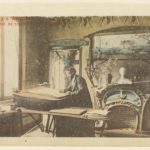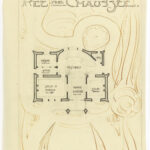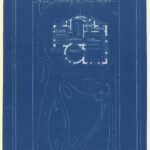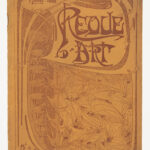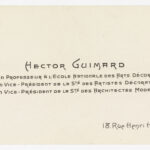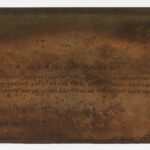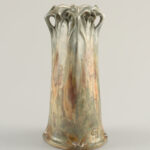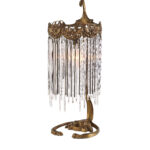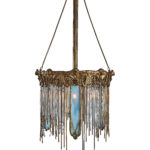Le Style Guimard
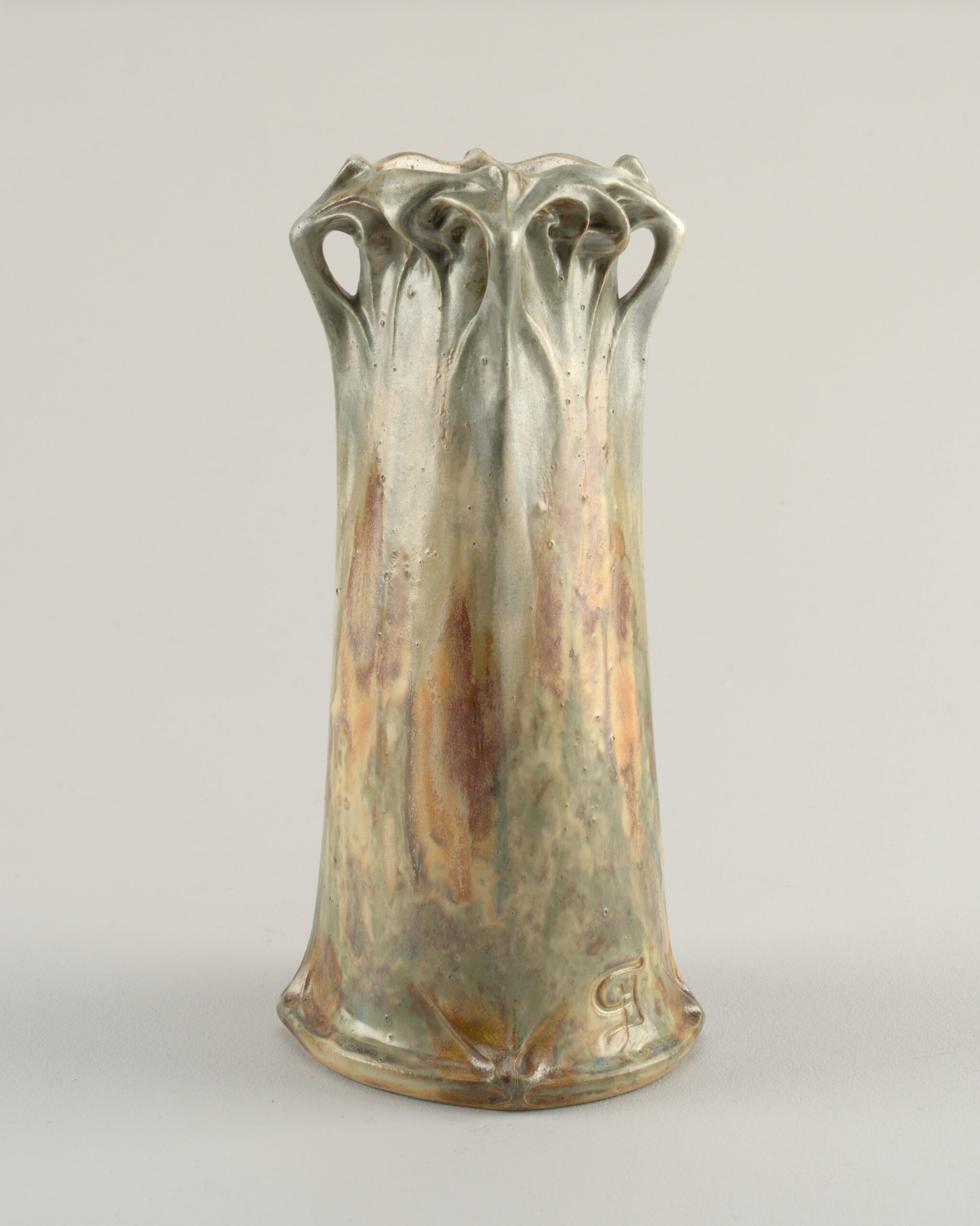
An essential aspect of art nouveau in general, and Hector Guimard’s work in particular, was the acceptance of technology and the machine as a means of creating a modern style. Although Guimard’s architectural commissions were created for specific clients, with the aim of achieving a unity of architecture and furnishings down to the smallest detail, he also designed for industrial production. Following the success of Castel Béranger, Guimard received design commissions from various manufacturers. In 1900, the directors of the École des Beaux-Arts engaged him to create two prototypes for vases to be produced by the Sèvres workshops for the Exposition universelle, held the same year. Included in the exhibition at the Salon des artistes décorateurs in Paris, also in 1900, was a showcase Guimard designed to demonstrate how stores should display his products. He also designed perfume bottles for the Exposition universelle—small, abstract sculptures in glass—for the F. Millot company. Lighting was yet another manufactured product Guimard experimented with: his Lustre Lumière electric lamps and fixtures were made of cast bronze with curtains of glass pendants that shimmered in the light. His embrace of industrial processes and his interest in designs that could be mass-produced identified Guimard as a modern, 20th-century architect.
—David A. Hanks, Curator of the Liliane and David M. Stewart Program for Modern Design
Adapted from Hector Guimard: Art Nouveau to Modernism, edited by David A. Hanks, published in May 2021 by Yale University Press in association with the Richard H. Driehaus Museum. Republished by permission of Yale University Press. Purchase it at SHOP Cooper Hewitt.
Process, products & marketing
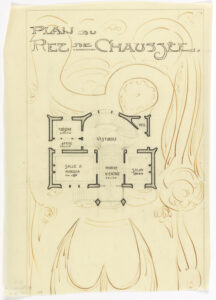
Drawing, Villa of M. Hemsy, St. Cloud, Plan
du Rez de Chaussee; pen and black ink,
graphite on paper; 32.5 × 23.3 cm
(12 ¹³⁄₁₆ × 9 ³⁄₁₆ in.) Gift of Mme.
Hector Guimard; 1950-66-14
Guimard’s interest in technology extended to material explorations in his buildings. He was particularly attracted to the molding and production possibilities of cast iron, which allowed him to replicate designs—either linear or sculptural—rapidly and in quantity. Cast-iron designs for the Saint-Dizier Foundries were included in the manufacturer’s trade catalogue of 1908 and illustrate the range of his designs in this material. Particularly interesting are the cast-iron street numbers in Guimard’s unique typeface. Guimard installed the cast-iron elements on many of his own buildings; other architects of the period used the products as well, though not so widely as the designer may have hoped.

Vase de Cerny, from the Hôtel Guimard; Manu-
-factured by Sèvres Porcelain Manufactory;
stoneware; 27 x 13.4 x 13.4cm (10 ⅝ x 5 ¼ x
5 ¼ in.); Gift of Mme. Hector Guimard; 1948-114-2
The Sèvres Porcelain Manufactory, the French national fabricator near Versailles, has been producing porcelain since 1756. At the turn of the century, Sèvres began to include art nouveau designs in its line and also introduced iridescent crystal glazes influenced by Japanese porcelain. Sèvres commissioned two new models from Guimard in preparation for the 1900 Exposition universals in Paris. The first design was the Chalmont Vase, a chacepot based on a ceramic design the architect had created for Castel Béranger. The second work was the Cerny Vase. Its crystalline glaze, in subtle, earthy tones of brown, rust, and green; its undulating form; and the perforated elements at its rim were inspired by nature. Guimard used this design in several interiors, including Hôtel Guimard. In 1901, Guimard undertook another commission for Sèvres, this time for the Saint Louis World’s Fair of 1904: the Binelles Vase. Named after rue des Binelles in the town of Sèvres, this vessel is the largest and most impressive of the three. Other French artists, in particular Taxile Doat, a designer at Sèvres from 1877 to 1905, drew on Guimard’s forms and decorations.
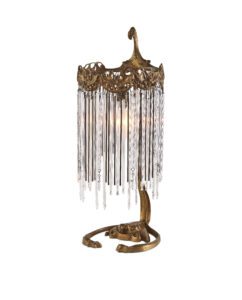
Luster Lumière Table Lamp; 1900-1910; gilt
bronze, glass; 50.2 x 19.7 x 26.7 cm (19 ¾ x
7 ¾ x 10 ½ in.); Produced by Langlois et Cie,
Paris; The Collection of Richard H. Driehaus
Guimard’s designs for the lighting manufacturer Langlois et Cie at 20, rue Malher in Paris were collected under the name Luster Lumière. Guimard applied for a design patent in France on June 9, 1910, and in Great Britain on July 7 of the same year, for his invention of icicile-like suspended glass pendants for use in lamps. He exhibited examples of these modern fixtures at the 1914 Salon des artistes décorateurs, publishing an accompanying trade catalogue. In 1949, Madame Guimard gave a copy of the 26-page catalogue, which illustrates in hand-tinted photographs the luminous ensembles of bronze, copper, or iron with glass, to the Metropolitan Museum of Art. The shaped armatures and glass pendants of the lighting fixtures represented le style Guimard, as noted by some of the catalogue captions. Guimard used the lighting in interiors he designed, including the salon, dining room, his wife’s bedroom, and the stair hall of Hôtel Guimard.
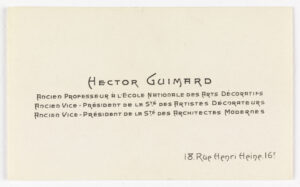
Business Card of Hector Guimard; copper engraving on
cream wove card stock; 6 × 10.2 cm (2 ⅜ × 4 in.); Gift
of Unknown Donor; 2003-1-1-b
Guimard published a splendid portfolio to celebrate his first architectural masterpiece: Castel Béranger, an apartment complex built between 1895 and 1897. In one of his many promotional initiatives, Guimard sought to generate new work opportunities by creating the equivalent of one of today’s luxe coffee-table tomes, which impress through size, weight, and extensive photography. The release of the portfolio in November 1898 coincided with his exhibition and lecture on Castel Béranger in the offices of the newspaper Le Figaro.
OBJECT GALLERY
The exhibition Hector Guimard: How Paris Got Its Curves is on view at Cooper Hewitt through May 21, 2023.
Featured Image: Vase de Cerny, from the Hôtel Guimard, Paris, France Vase; Designed by Hector Guimard ((French, 1867–1942)); Manufactured by Sèvres Porcelain Manufactory (France); France; stoneware; H x W x D: 27 x 13.4 x 13.4cm (10 5/8 x 5 1/4 x 5 1/4in.); Gift of Mme. Hector Guimard; 1948-114-2
